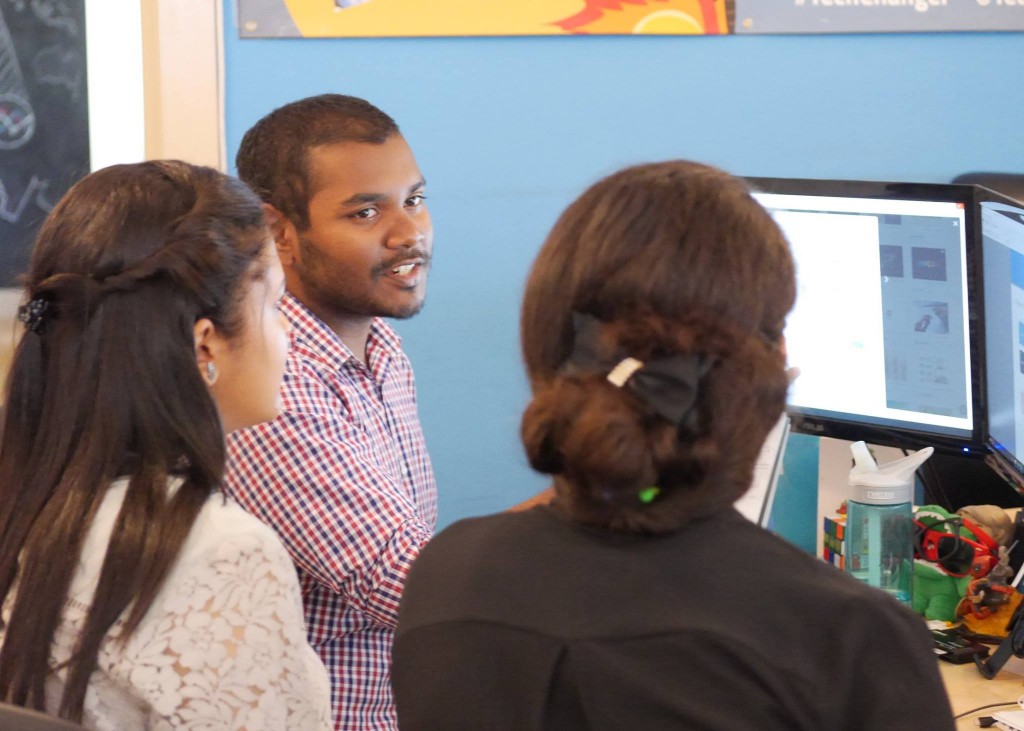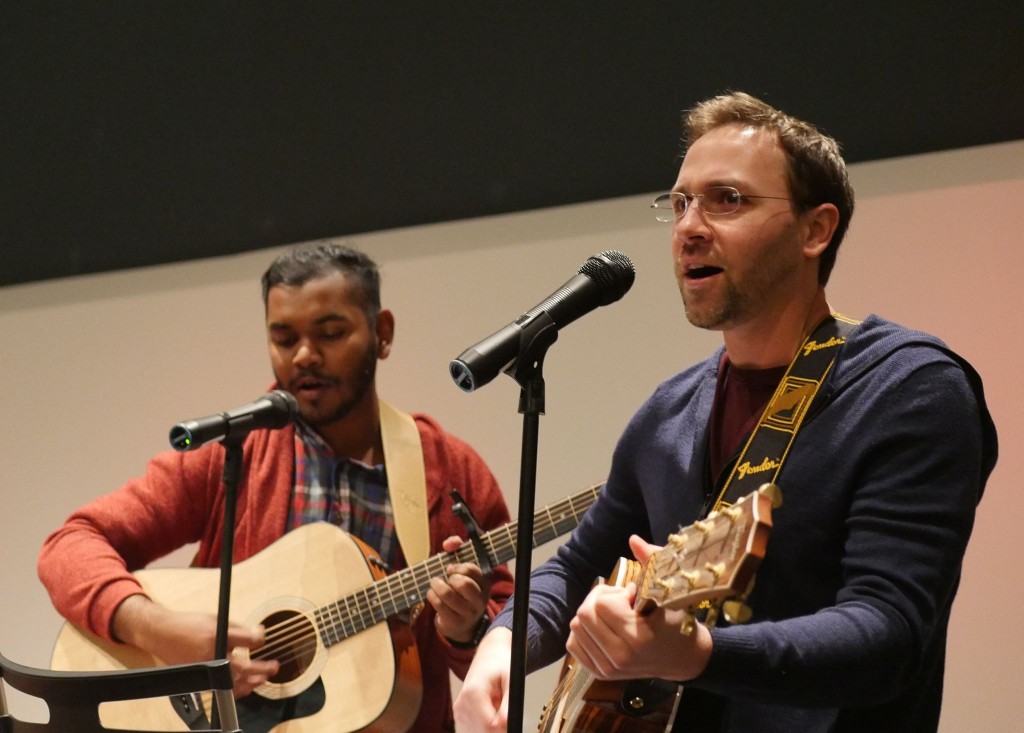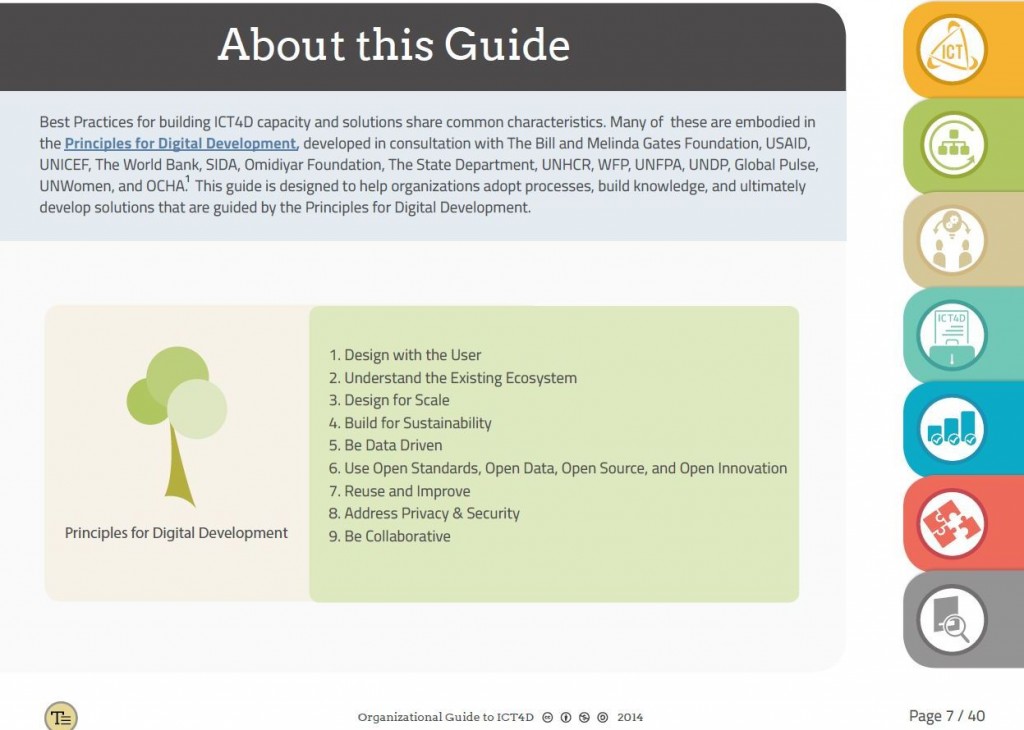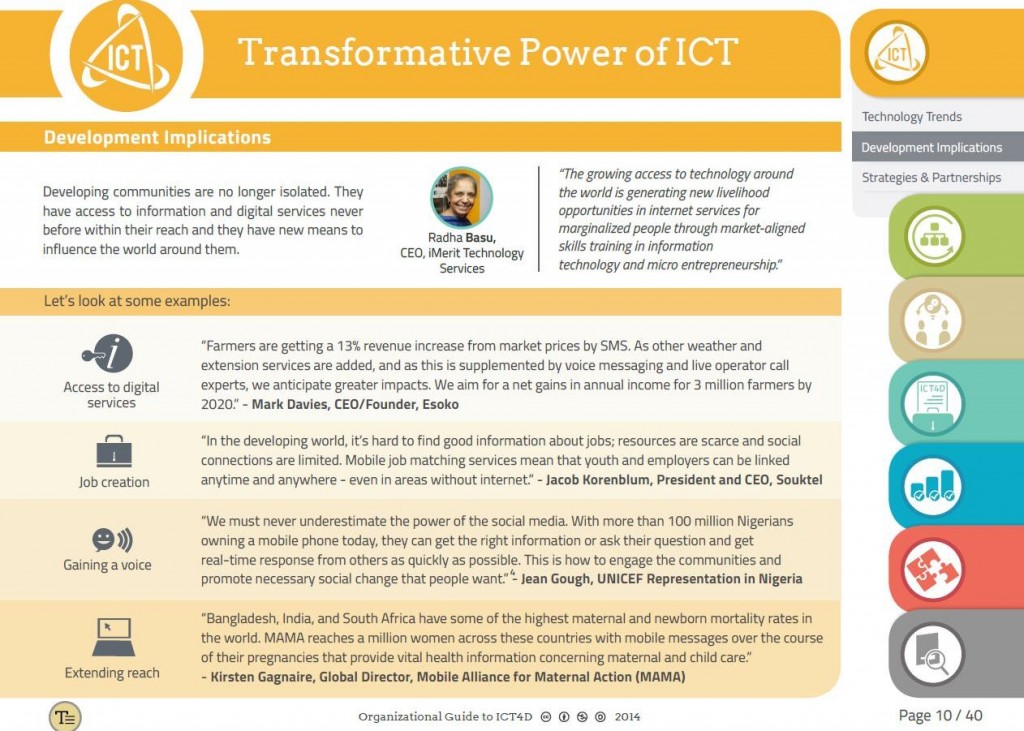Already an established graphic designer with the TechChange team, Yohan Perera recently assumed the responsibilities of Creative Director, where he will oversee all animations, illustrations, videography, photography, and any other creative projects.
To learn a bit more about Yohan and what he’s hoping to accomplish in this new role, we sat down and asked a few questions:
Q: What has surprised you most since first joining TechChange in 2014? What are some of the challenges and opportunities that you remember most?
TechChange was a company that intrigued me solely because of its involvement in the development sector and commitment to bring social change through tech. The “start-up” culture was something very foreign to me but how the team at TechChange preserved it was commendable. Everyone respected each other and themselves leading the way to produce creative solutions for global issues through online courses, animations and beautiful graphic assets. Being placed in such an environment presented the opportunity to grow and explore ways to use creativity for development and positive social change. The biggest challenge to this day is figuring out visual representation to some of society’s most complex issues and creative solutions that have never been shown in a visual medium before.
Q: What’s the creative team like to work with on a day-to-day basis? How do you all keep the creativity flowing?
The creative team at TechChange is a family. We keep each other humble and make sure to get work done while we enjoy delicious meals that U St. has to offer. My personal opinion is that creativity comes through continuous exploration, we like to say out loud even the worst of ideas before settling on a direction. As a team we rely on each other to inspire and critique ideas, this helps weed out the bad ideas from the good ones.
Q: You’ve spoken about your passion for social change and your work with Global Unites. How has that influenced your work with TechChange?
My work with Global Unites opened my mind and heart to see the learned hatred and prejudice us as humans have towards each other. This is something common to many societies around the world. The radicalization of young people to commit despicable acts in the name of country, religion, caste, creed and tribe was something that I wanted to combat and be a part of the change. These experiences helped me understand the importance of the projects our clients are involved in. The time to take action to solve the issues in society is now, it makes me happy to see the work that I do being used to influence young people, community leaders and civil society at large, be it in Sub-Saharan Africa, Asia, North America or in remote parts of the world.
Q: You graduated as valedictorian of your class from Full Sail University. What would you go back and tell yourself during your studies?
I would tell myself not to worry about the future, the future will worry for itself. Take action now, be a part of the change now. Keep using your skills to change the lives of people for the better and help set the course of this world in a direction that’ll bring justice to the oppressed and marginalized, love to the unloved, and food for the hungry.
- Yohan hosting a workshop for TechGirls 2016
- Yohan and John get creative on a video shoot
- Yohan and Nick play the Fail Song
Q: Where do you see educational animations in the ongoing creative direction with TechChange? Could you talk a bit about the team?
I believe we’ve come up with an animation style and storyline that is unique to TechChange. Moving forward we are hoping to raise the bar on the storytelling aspect of the educational animations. Nine times out of ten we are talking about important topics that affect millions of people around the world, telling these stories and the solutions our clients provide in a manner that leads people to action will be the direction we would like to pursue.
Q: What are some of your initial ideas for continuing to advance TechChange’s creative leadership in the development space? Are there any areas you’re particularly excited about?
The development space is saturated with design that has been given little thought and effort. Good messaging should be followed with intentional design. I am excited to see how virtual reality, augmented reality, story-driven videos and animations will influence the development sector in the months to come. I’m confident that TechChange will continue to make motivated efforts to push the bar higher in both quality and storytelling moving forward.





